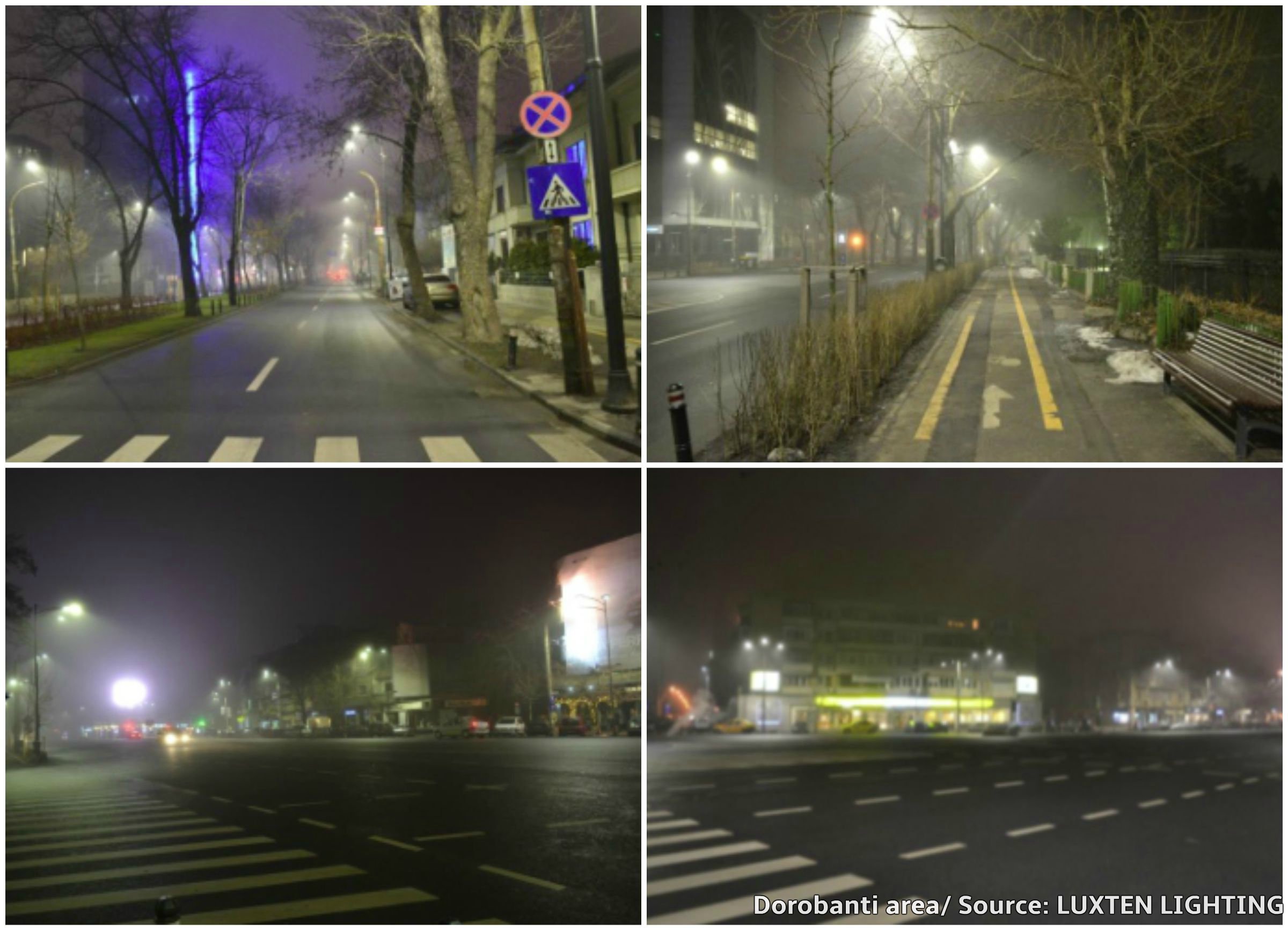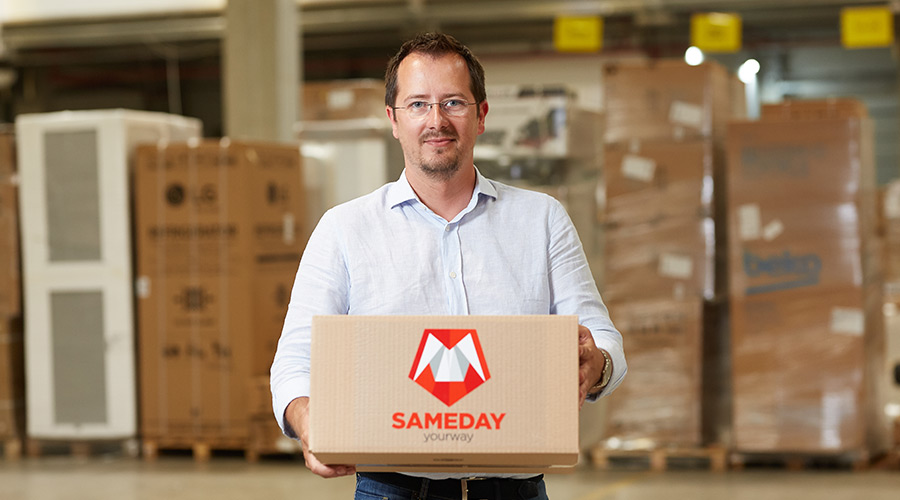Public lighting in Romania: between non-electrified communities and connected lighting

Romania is undoubtedly a country of contrasts and the lighting sector does not make an exception. While Romania “spread” the light across Europe with the first street lighting system in Timisoara in 1884, 131 years later, there are still non-electrified areas in the country.
So, in spite of the technology developments in recent years in terms of lighting which have impacted positively the domestic sector, there are still major discrepancies in the country.
In 2015, in Romania there are still households that are not connected to an electric power source: almost 100,000 households in over 2,000 municipalities and 2,800 in nearly 100 villages. There are also areas that are not illuminated at all, plus others that are insufficiently illuminated, like some highway interchanges that could impact the traffic safety.
“There is a lot to improve in this field in Romania, albeit in terms of modern technology, our country is on the right path,” states Bogdan Balaci, General Manager South East Europe at Philips Lighting.
Indeed, the modern light-based technologies, namely LED, have been adopted quite rapidly, particularly in large cities as part of the efforts to improve energy efficiency in the light of the related EU Directives. However, the sodium-based lighting systems are not to be neglected, as they are pretty efficient, so their use in public lighting is still an option.
“When we talk about energy efficiency in the lighting sector, we mainly refer to LED technology. I believe we have taken major steps in this regard nationwide, although there is still a lot to be improved, especially with respect to the legislative framework, but the modern technology, primarily LED systems have proved to be very efficient. Practically, we have the same adoption rate as any other developed country in Europe,” explains Bogdan Balaci.
The majority of professional projects last year, whether they concerned the public or private sector, involved LED technology. “The professional LED systems grew by 60 percent in 2014 compared to 2013,” he adds.
He further states that even if we are somehow behind compared to more developed countries in terms of “more light”, we will probably skip some development phases and will implement directly the new technology.
Large cities have already begun replacing the public lighting system with LED-based equipment, at least partially. In Bucharest, for instance, the modernization of the street lighting system started a few years ago and the latest achievements in this regard include control systems, as well. However, there is still room for improvement, as only about 7 percent of the luminaries (9,000 out of a total of approx. 123,000) in Bucharest use LED technology.
“There are over 9,000 LED-based luminaries in Bucharest, plus voltage reducers which reduce voltage over night in areas with less traffic, thus light intensity being lower, which results into energy savings of 20 to 30 percent,” explains Silvian Serbanescu,Vice President of the Board of Luxten Lighting, the concessionaire of the street lighting system in Romania’s capital city.
The latest project the company completed and the most advanced technologically concerns the Dorobanti area, a first step towards implementing the ”Bucharest 2035 Strategy”, an initiative of the Bucharest municipality which incorporates the Smart City concept, along with solutions, technologies, and integrated systems so as the public lighting system works as a functional whole.
Modern lighting, beyond energy efficiency, an opportunity to increase operational efficiency
LED-based luminaries have a guaranteed life time of over 50,000 hours, some of them could even reach 75,000 hours which means about 12 to 15 years, according to Serbanescu. So, unlike the conventional lighting equipment which requires verification every four year, along with replacement of some of its components, basically, LE
Ds do not require such verification, hence the maintenance costs are significantly reduced.
So, apart from being regarded as a fundamental tool to improve energy efficiency, modern lighting proves to be an extremely important tool to increase operational efficiency. In this case, the Dorobanti project is expected to generate annual savings of EUR137,000 from reducing maintenance costs, whereas the electric power expenses will be reduced by only EUR9,400.
Still, in spite of the major savings that can be achieved by implementing modern lighting systems, this sector does not receive the proper attention and consideration from the authorities when it comes to energy efficiency.
“If we analyze all the proposals for the EU funding eligible sectors as per the 2014-2020 financial framework, they include only energy efficiency projects for buildings; lighting solutions are not mentioned at all, the amounts are not large and I am afraid that most of those funds will be allocated to buildings weatherization,” says Bogdan Balaci.
Even so, municipalities could access alternative financing from the European Bank for Reconstruction and Development (EBRD) which supported the Dorobanti project.
 The investment of nearly EUR5 million was partly financed by the EBRD, marking the first project of its kind implemented under the Municipal Finance Facility - Energy Efficiency programme, thus benefitting from grants worth almost EUR740,000 (15 percent of the total funds).
The investment of nearly EUR5 million was partly financed by the EBRD, marking the first project of its kind implemented under the Municipal Finance Facility - Energy Efficiency programme, thus benefitting from grants worth almost EUR740,000 (15 percent of the total funds).
Silvian Serbanescu stresses out that it should not be seen as an investment, though, but rather as a maintenance project for Bucharest’s public lighting system.
“The most important aspect is that the underground electric power network was changed for both projects (Ed. last year, Luxten Lighting also modernized the Iuliu Maniu area). Enel was the owner of those networks which were very old. Starting with the network, the poles were then changed and equipped with LED technology,” he explains.
In fact, most of the projects run over the past years consisted of replacing the network, probably the major issue in terms of street lighting in the city.
Like the network, this issue is pretty old, as the Bucharest City Hall, which is in charge with public lighting, owns only part of this network, about 60 percent of it being held by Enel. Thus, any malfunction of the network should be handled by its owner, yet this rarely happens and consumers are eventually affected because they are not aware of the current situation, describes the Luxten’s representative.
“There is a law to deliver public lighting - the entire public lighting system should have been delivered to the City Hall when the privatization was carried out,” he goes on, also detailing that since Enel was supposed to receive compensations for disposing of the system and no agreement has been reached, the Municipality decided to build new networks instead of acquiring old ones.
Integrated control systems, the future in the lighting industry
While the advantages of adopting LED technology are obvious, the future in this industry is based on control, as emphasized by Dorin Beu, President of the Romanian National Lighting Committee during Govnet Conferences’ Romanian Lighting Industry Forum 2015: “Control is extremely important. The chance that we have now with LED equipments must be supported by a control system, too”.
Such control system - telemanagement, was incorporated in the Dorobanti project ensuring monitoring and management services, which translate into lower maintenance costs. Additionally, any malfunctions are notified and electricity theft is identified rapidly. This system could be upgraded so that the luminaries are controlled individually, says Silvian Serbanescu, but the costs involved are much more higher and they are not justified at this point, that is why there have been only pilot projects comprising such telemanagement systems implemented up to this point.
 One of those projects was executed in Campina, Philips Lighting delivering the so-called ”connected lighting” solution.
One of those projects was executed in Campina, Philips Lighting delivering the so-called ”connected lighting” solution.
”We began implementation in Romania, too - there are some initiatives in public lighting, however the complete solution has not been implemented yet. One of our first projects was initiated in Campina as part of a larger project implemented by a concessionaire and we delivered the street lighting and control system,” explains Bogdan Balaci.
The whole implementation lasted about three years (2009-2012) and there has been recorded continuous improvement. The electric power use was reduced by 28 percent as a result of two measures: the use of energy efficient technology and the implementation of a unique control system which integrates all assets.
Besides control, the asset management area is very important, especially for big cities, where it is very hard to keep those assets under control. The next step in connected lighting would be the connection of all these assets to an ERP (Energy Resource Planning) control system which allows a company to collect, store, manage, and analyze data.
Another innovation is the “sharing urban infrastructure” concept, which is a very important part of connected lighting, says Balaci: “For a mobile operator that wants to install a new aerial in a city, it is very difficult in terms of costs, authorization, etc. As we evolve and start using new high speed technologies like 4G, LTE, we can address this issue by implementingthe “smart pole” developed by Philips in partnership with Ericsson, a pole that is equipped with all the necessary technology while using the existing urban infrastructure.”
A clearer legislative framework, the common desire of the domestic business environment
While access to the most advanced technology in this field is not a problem, to build an efficient and, thus, modern, lighting infrastructure, a clear legislative framework is required, especially when it comes to the public sector, believes Balaci.
“We need a much clearer legislation with respect to ESCO contracts, energy efficiency contracts, and PPP contracts,” he explains.
Another issue concerns the standards applied in the lighting industry, as in Romania, these standards are underused, Balaci says: “They exist, nothing has to be changed. Unfortunately, when it comes to tenders, be it public or private, these standards are rarely imposed and then, the expected quality is not met”.
Silvia Serbanescu shares his point of view: ”Indeed, standards exist. They are not invariably respected or when it comes to public procurement procedures, there are subterfuges used”.
The solution is to adopt legal and administrative provisions on public procurement for infrastructure modernization to access efficient solutions based on the Total Cost of Ownership (TCO) and on a higher project life-cycle instead of selecting the cheapest solution on the market, according to Bogdan Balaci.
”While in the industrial sectors lighting standards are usually strictly respected, given the accident risks, compliance amongst office buildings or hotels, for instance, is very little”, he adds.
On the other hand, Serbanescu mentions the permitting and authorizing phase of lighting projects amongst the challenges they regularly face. For instance, the execution of the Dorobanti project lasted about five months, whereas Luxten Lighting spent almost one year for obtaining all the necessary permits to launch the project.
However, this is a common issue across all business sectors. In contrast, a specific problem concerns the lighting regulations which in the existing form are not generally applicable and therefore, they should adapt to the needs and requirements of local governments, believes Silvian Serbanescu.






